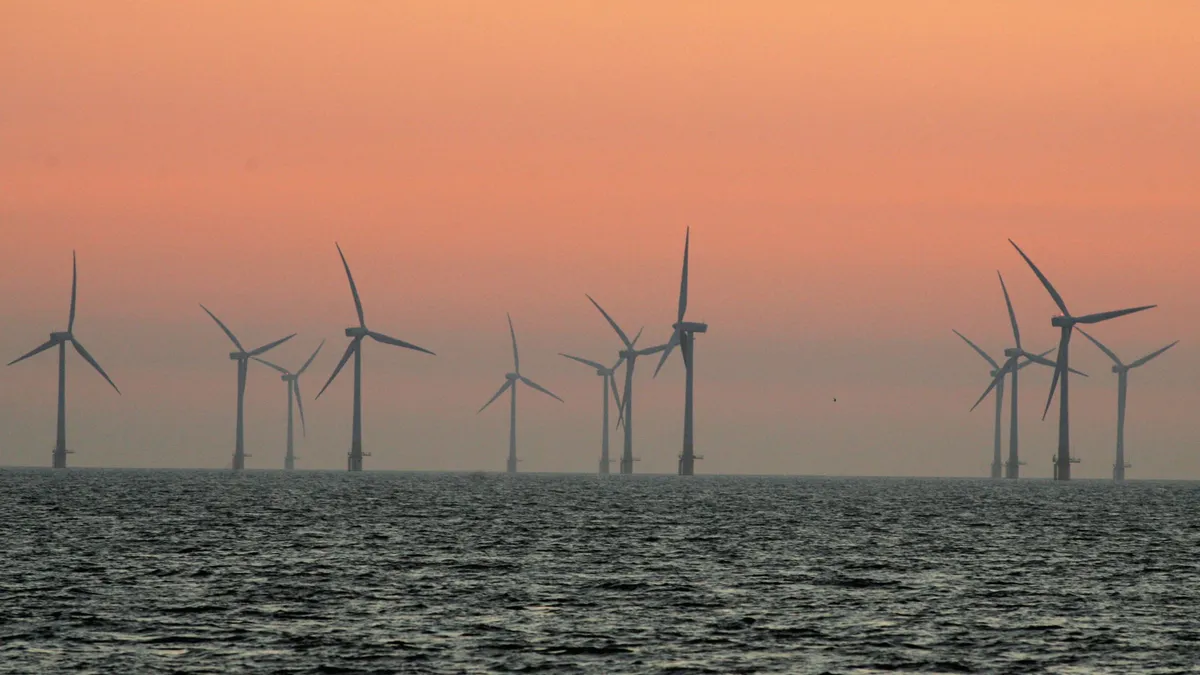Dive Brief:
- Two independent analyses completed this month have determined that the U.S. is now on track to deploy at least 30 GW of offshore wind generation by 2030, meeting a key goal established by the Biden administration.
- New York, New Jersey and Massachusetts have pledged to procure more than 45 GW of offshore wind by 2040, and 17.5 GW of wind projects have already secured financing and offtake pathways, according to an analysis by the Business Network for Offshore Wind. Meanwhile, S&P Global Market Intelligence reports that U.S. developers have announced at least 30.7 GW in offshore wind projects, though many projects remain in early planning stages and have not yet secured financial backing.
- The 30 GW benchmark, once considered ambitious, now looks to be the "tip of the iceberg" as the offshore industry prepares for rapid expansion, according to Sam Salustro, director of Maryland coalitions and partnership at the Business Network for Offshore Wind.
Dive Insight:
After a slow start, U.S. offshore wind developing is experiencing a sudden burst of momentum — enough to meet targets established by the Biden administration, but still far less than the rate of expansion seen in other countries, according to industry experts.
"Offshore wind has been trying to gain a foothold in the U.S. for almost two decades now, with only two projects totaling 41 MW to show for it," Adam Wilson, renewables research analyst for S&P Global Market Intelligence, said in an email. "Europe, by the end of 2020, had installed over 25,000 MW of offshore wind."
The first offshore wind turbine in Europe was built in 1991, according to the industry group WindEurope.
Offshore activity has ramped up substantially over the last 3-5 years, Wilson said, but even with 30.7 GW of projects in the works, the industry remains nascent. Of the projects tallied by S&P Global Market Intelligence, 24.3 GW were just announced or remain in very early developmental stages. "They still have many hurdles to go through before even just construction can begin, let alone commissioning," he said.
Even so, Salustro sees reason for optimism. New York, New Jersey and Massachusetts are expected to begin procurement processes for more than 45 GW of additional offshore wind capacity in the near future. State and federal support means offshore developers now face fewer barriers in the financing process, and as the cost of offshore wind has dropped, more northeastern utilities are looking to it as a means of achieving their own clean energy goals, Wilson said.
Barring an unexpected and drastic shift in state and federal policy, offshore wind seems likely to continue on an upward trajectory, Wilson said. And that being the case, Biden’s longer-term goal of 110 GW of offshore wind by 2050 doesn’t seem too far off.
"It’s a little trite, but honestly the sky is the limit," Wilson said, noting that NREL studies have concluded total U.S. offshore wind capacity could exceed the country’s entire electricity consumption. "Now of course it’s unrealistic to believe that offshore wind will ever come close to meeting that figure but it gives you the sense of how little we’ve tapped into the country’s potential. The total current pipeline of 30.7 GW, if installed, would generate roughly 100 TWhs annually—not even 2% of the country’s theoretical potential."













